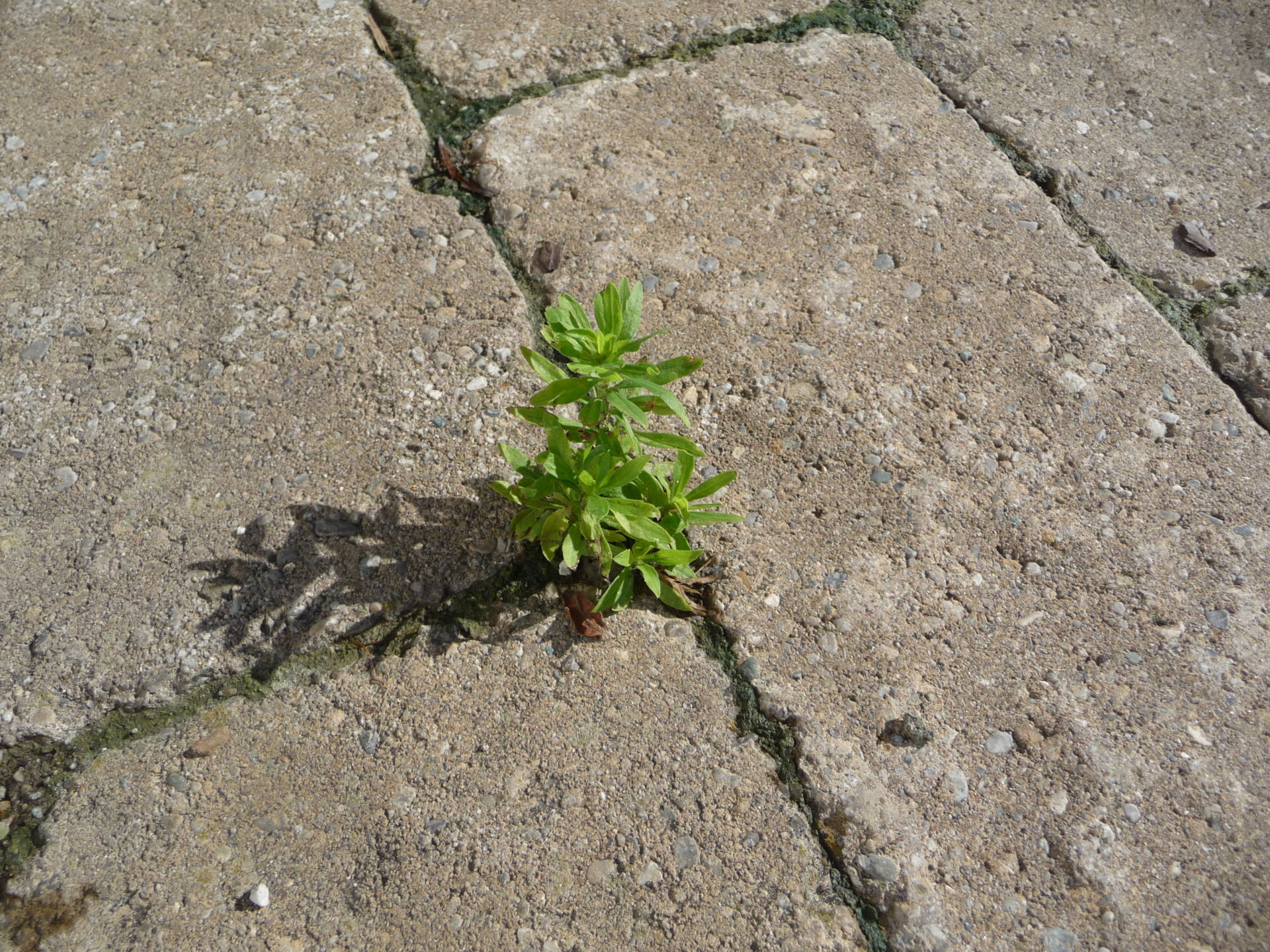Weeds in Driveway
Garden Clippings for August 8, 2020
If there was an easy way to remove weeds from sidewalk cracks, there would be no need to write about it. Weeds and grasses growing in the cracks of sidewalks, driveways and interlocking brick are annoying, and are considerably more difficult to deal with than weeds in the garden.
Weeds are rarely an issue in a newly installed patio or driveway. But as time goes on, weed seeds land up in tiny crevices and will sprout if conditions are favorable.
Don’t blame driveway and sidewalk weeds on the dirt underneath concrete. Weeds do not sneak up through the joints or crevices only to rear their ugly heads on the surface. Rather, weed seeds settle in the joints and will grow if there is enough water, light and food to sustain themselves.
Moisture is weeds’ best friend. Sidewalks and patios that are slightly sloped so water runs off are not as likely to be challenged by weeds than level surfaces where water lingers. Shaded surfaces are more vulnerable to weed growth than areas of hot sun.
The old-fashioned way of pulling weeds out by hand is time consuming and frustrating especially if weeds are persistent and roots are too difficult to pull out. To ease the task, pull weeds when they are young and tackle the job after a rain.
Consider using an old kitchen knife, a gardener’s knife or a small slot headed screwdriver to help pull difficult weeds out from cracks. I’ve also been told that boiling water carefully poured over the weeds will kill them.
Applying herbicides to weeds in sidewalk cracks is the lazy person’s method of killing unwanted weeds. An application of horticultural vinegar will do the trick nicely but will need to be done about once a month because vinegar may destroy the leaves while leaving the roots unhindered.
Those who opt to use glyphosate, commonly known as Roundup, to kill weeds should be reminded that although Roundup is readily available, it may only be used to protect your health and safety. According to Ontario’s Cosmetic Pesticide Act, Roundup is not to be used for cosmetic purposes.
If you kill weeds with an herbicide, make the effort to clean up the dead weeds. If you leave them indefinitely, they will remain in the crevice and rot, providing a growing medium for future weed seeds to take root.
For a weed free surface, consider using polymeric sand to fill cracks and joints. Commonly used in good interlocking brick installations, polymeric sand swept in the joints will do a good job of keeping weeds at bay. Be sure to follow label directions carefully and moisten the joints with a fine mist. Apply on a warm day and do not leave sand on the brick or concrete surface.
Polymeric sand is reasonably easy to apply when carrying out a new installation of brick or cement slabs. To refurbish established jobs, use a powerwasher to blow out the existing sand and debris from the joints and replace with clean polymeric sand. In addition to inhibiting weed growth polymeric sand will keep ants at bay.


